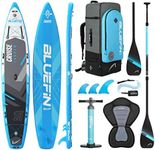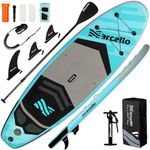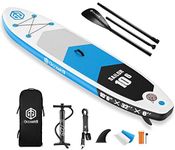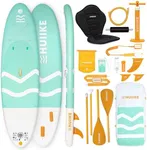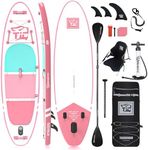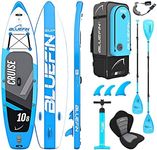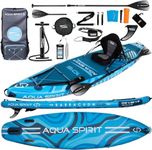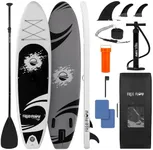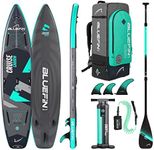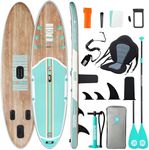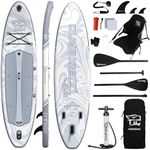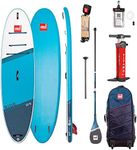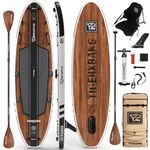Buying Guide for the Best Paddleboards
Choosing the right paddleboard can greatly enhance your experience on the water, whether you're looking to relax, explore, or get a workout. Paddleboards come in various shapes, sizes, and materials, each suited to different activities and skill levels. Understanding the key specifications will help you make an informed decision and find the best paddleboard for your needs.Board TypePaddleboards come in different types, such as all-around, touring, racing, and surf. All-around boards are versatile and suitable for beginners, while touring boards are designed for long-distance paddling and offer better tracking. Racing boards are narrow and fast, ideal for competitive paddling, and surf boards are shorter and more maneuverable for riding waves. Choose a board type based on your primary activity and skill level.
Board LengthThe length of a paddleboard affects its speed, stability, and maneuverability. Shorter boards (under 10 feet) are more agile and easier to turn, making them great for surfing and children. Medium boards (10-12 feet) offer a balance of speed and stability, suitable for all-around use. Longer boards (over 12 feet) are faster and track better, ideal for touring and racing. Consider your intended use and experience level when selecting the length.
Board WidthWidth impacts the stability and speed of a paddleboard. Wider boards (over 32 inches) provide more stability, making them great for beginners, yoga, and fishing. Medium-width boards (30-32 inches) offer a balance of stability and speed, suitable for general use. Narrow boards (under 30 inches) are faster but less stable, ideal for experienced paddlers and racing. Choose a width that matches your skill level and intended activities.
Board ThicknessThickness affects the buoyancy and rigidity of a paddleboard. Thicker boards (over 5 inches) are more buoyant and can support more weight, making them suitable for larger paddlers and carrying gear. Medium-thickness boards (4-5 inches) offer a balance of buoyancy and performance, suitable for most paddlers. Thinner boards (under 4 inches) are less buoyant but more responsive, ideal for lighter paddlers and surfing. Consider your weight and intended use when choosing the thickness.
Board MaterialPaddleboards are made from various materials, including inflatable PVC, epoxy, and fiberglass. Inflatable boards are portable and durable, great for travel and storage. Epoxy boards are lightweight and offer good performance, suitable for general use. Fiberglass boards are high-performance and responsive, ideal for racing and surfing. Choose a material based on your priorities, such as portability, durability, and performance.
Fin SetupThe fin setup affects the stability and maneuverability of a paddleboard. Single fin setups offer good tracking and are easy to use, suitable for beginners and flatwater paddling. Three-fin (thruster) setups provide better maneuverability and are great for surfing. Multiple fin setups (2+1 or quad) offer a balance of tracking and maneuverability, suitable for various conditions. Choose a fin setup based on your paddling environment and skill level.
Weight CapacityWeight capacity indicates how much weight a paddleboard can support, including the paddler and any additional gear. Boards with higher weight capacities (over 250 pounds) are suitable for larger paddlers and carrying gear. Medium weight capacities (200-250 pounds) are suitable for most adults. Lower weight capacities (under 200 pounds) are ideal for children and lighter paddlers. Consider your weight and any gear you plan to carry when selecting a board.
